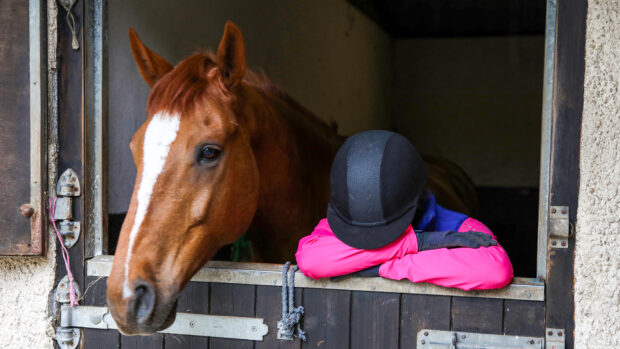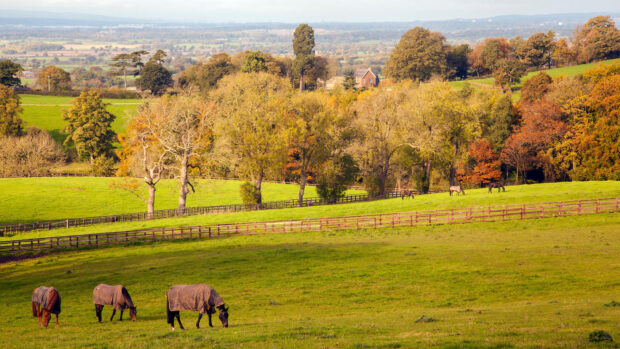Spillers' equine nutritionist Clare Barfoot provides one H&H forum user with some helpful advice on how to feed a pony that is prone to laminitis
Q: Feeding a pony prone to laminitis: “My pony is prone to laminitis (he got a very mild case of it in May for the first time as he was overweight due to the spring grass.) He was put in a starvation paddock and his feed was reduced to a handful of Good Doer chaff and 1 1/2 mugfuls of Baileys Lo-Cal Balancer per day. He was also allowed to eat from a small haynet of hay while he was in. He lost enough weight and is looking well at the moment, however I do not want him to loose any more weight as he is about right now, but I also do not want him to put any more on. I am keeping him in the starvation paddock but allowing him to come in and eat hay. I have also increased his feed to a small scoop of Good Doer chaff and two mugfuls of pony cubes as well as the usual 1 1/2 mugfuls of Baileys Lo-Cal Balancer. Will this diet help him maintain his weight? I think he is getting all of the right vitamins every day but I was wondering if there was anything else I should or could be feeding him or does this sound about right?”
A: Well done on getting your pony to a healthy weight — this will certainly reduce his risk of getting laminitis again.
Maintaining his weight going forwards unfortunately will be a matter of trial and error as it will depend on how much work you will be doing with him, the weather and the quality and quantity of grass available in his paddock.
Continued below…
Related articles:
- H&H forum: find out what H&H readers suggested
- Find out how to reduce the risk of laminitis in horses
- Read more expert feeding advice
The two most important things to consider are making sure the diet is fully balanced and meeting your pony’s daily nutrient requirements and that, although you are wanting to maintain his weight, he is receiving enough fibre in order to maintain his digestive and psychological health. It will be really difficult to assess how much grass he is receiving from his paddock, but as a guide his total forage intake shouldn’t drop below 15g/kg bodyweight dry matter.
However, the most tangible measure to assess if he is getting enough food is whether or not he is gaining or losing weight. This is ideally measured by regular body condition scoring. For an easy to follow guide see our website.
Continued below…
With regards to bucket feed, a balancer is ideal for him as it will supply all the vitamins and minerals he needs without excess calories. SPILLERS Lite + Lean Balancer is specially formulated to balance a calorie restricted diet. It’s high in the important amino acid lysine too, which can be lacking in a calorie restricted diet. The balancer can be mixed with a little low calorie chopped fibre such as SPILLERS Happy Hoof Molasses Free. As for adding in horse and pony cubes, I would advise feeding him a little more hay if you think he has dropped weight as this will take longer to eat and the more time he spends chewing the better for his all-round health and well-being.
For more information on feeding to support weight gain call the SPILLERS Care-Line on 01908 226626.




